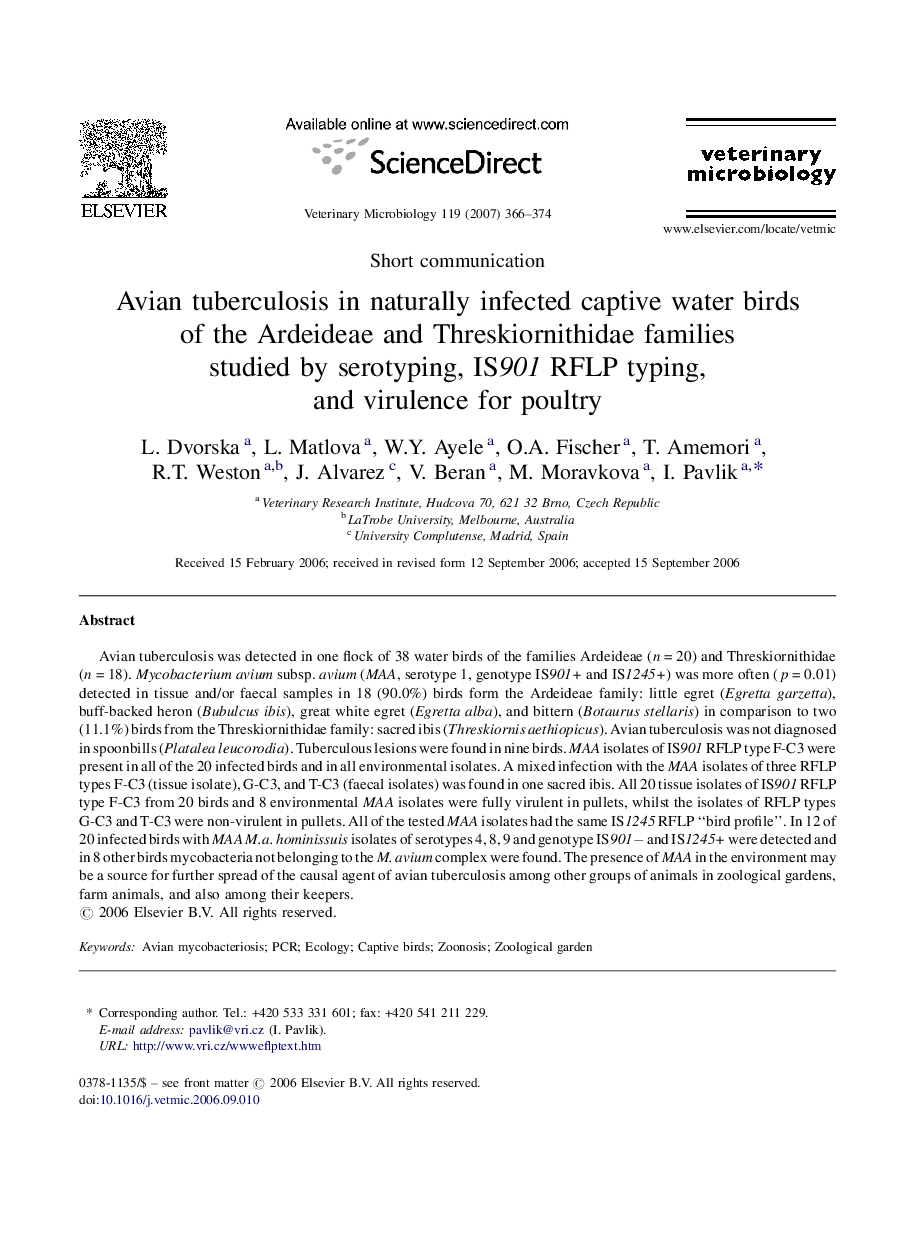| Article ID | Journal | Published Year | Pages | File Type |
|---|---|---|---|---|
| 2469428 | Veterinary Microbiology | 2007 | 9 Pages |
Avian tuberculosis was detected in one flock of 38 water birds of the families Ardeideae (n = 20) and Threskiornithidae (n = 18). Mycobacterium avium subsp. avium (MAA, serotype 1, genotype IS901+ and IS1245+) was more often (p = 0.01) detected in tissue and/or faecal samples in 18 (90.0%) birds form the Ardeideae family: little egret (Egretta garzetta), buff-backed heron (Bubulcus ibis), great white egret (Egretta alba), and bittern (Botaurus stellaris) in comparison to two (11.1%) birds from the Threskiornithidae family: sacred ibis (Threskiornis aethiopicus). Avian tuberculosis was not diagnosed in spoonbills (Platalea leucorodia). Tuberculous lesions were found in nine birds. MAA isolates of IS901 RFLP type F-C3 were present in all of the 20 infected birds and in all environmental isolates. A mixed infection with the MAA isolates of three RFLP types F-C3 (tissue isolate), G-C3, and T-C3 (faecal isolates) was found in one sacred ibis. All 20 tissue isolates of IS901 RFLP type F-C3 from 20 birds and 8 environmental MAA isolates were fully virulent in pullets, whilst the isolates of RFLP types G-C3 and T-C3 were non-virulent in pullets. All of the tested MAA isolates had the same IS1245 RFLP “bird profile”. In 12 of 20 infected birds with MAA M.a. hominissuis isolates of serotypes 4, 8, 9 and genotype IS901− and IS1245+ were detected and in 8 other birds mycobacteria not belonging to the M. avium complex were found. The presence of MAA in the environment may be a source for further spread of the causal agent of avian tuberculosis among other groups of animals in zoological gardens, farm animals, and also among their keepers.
